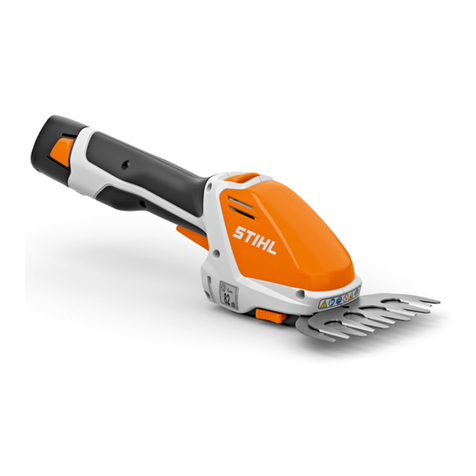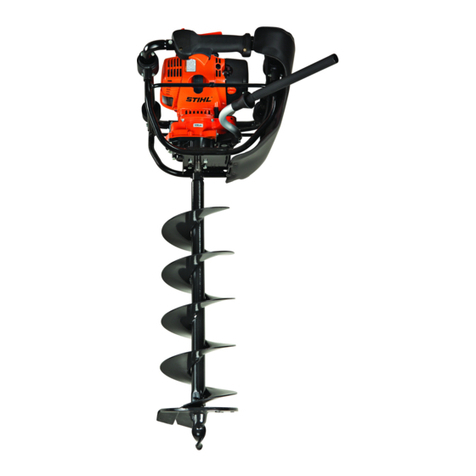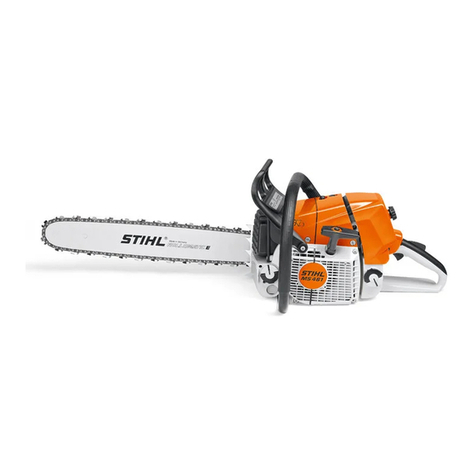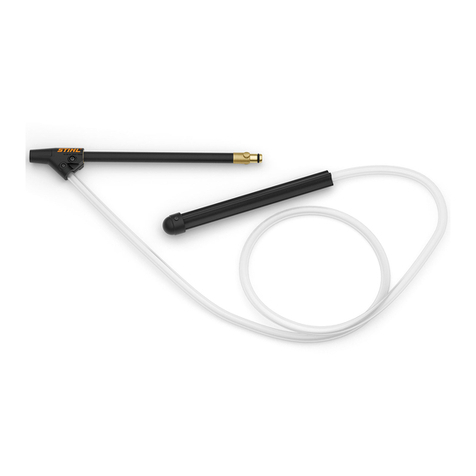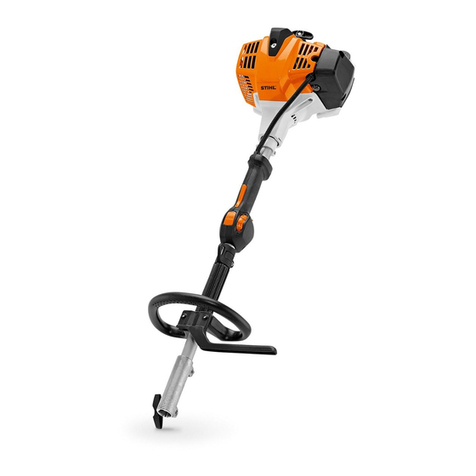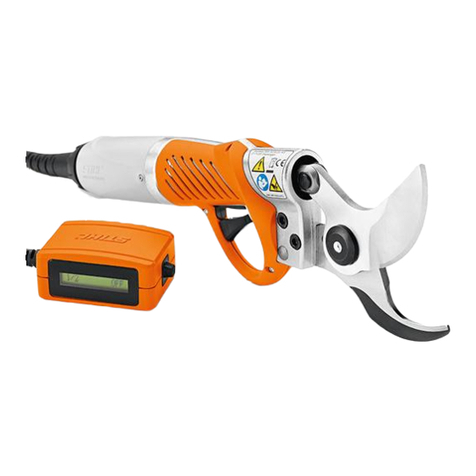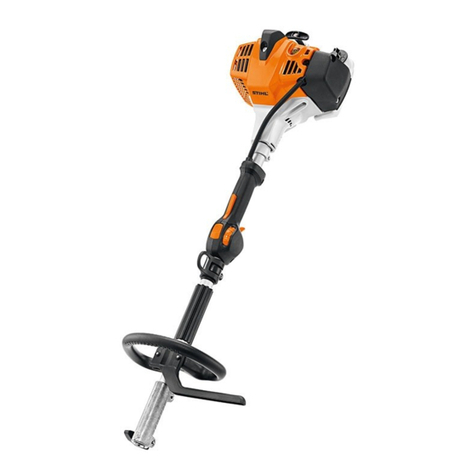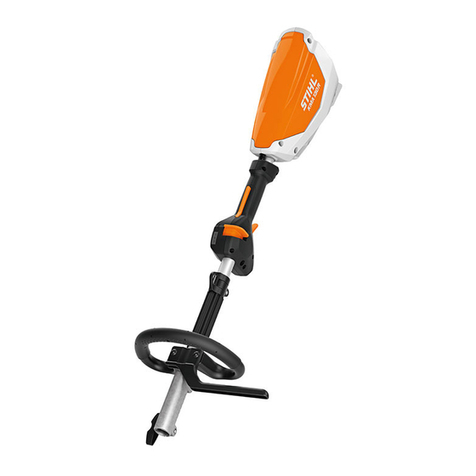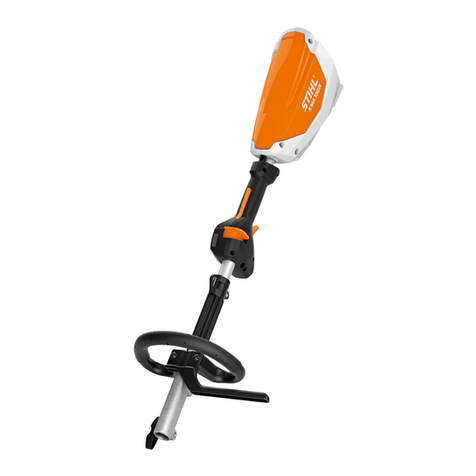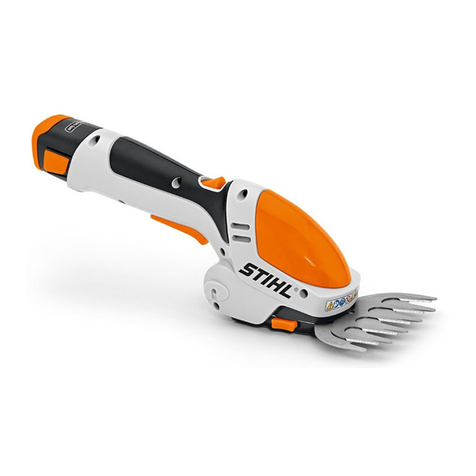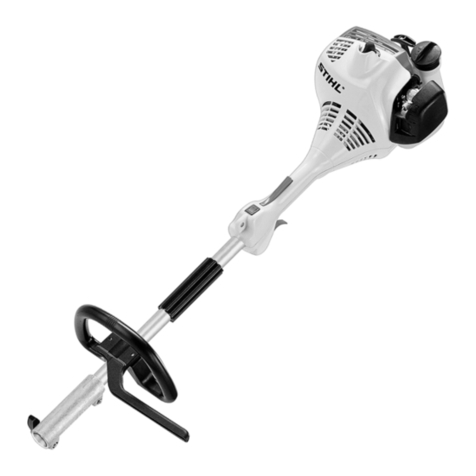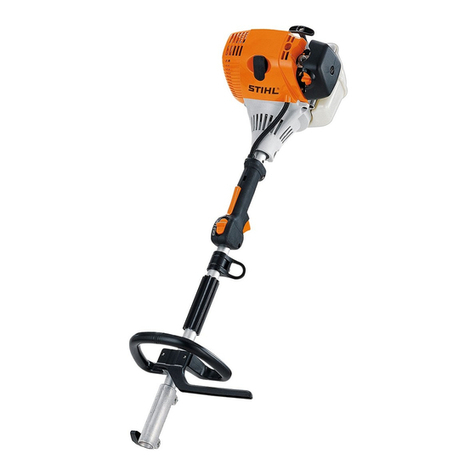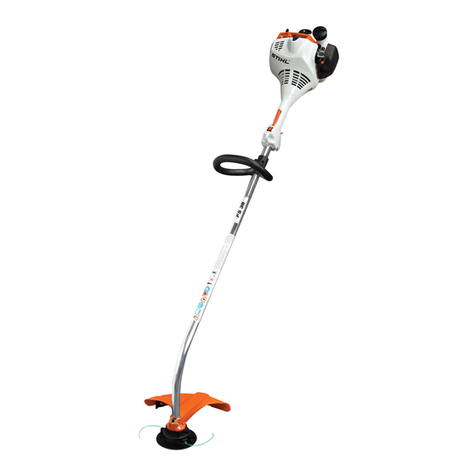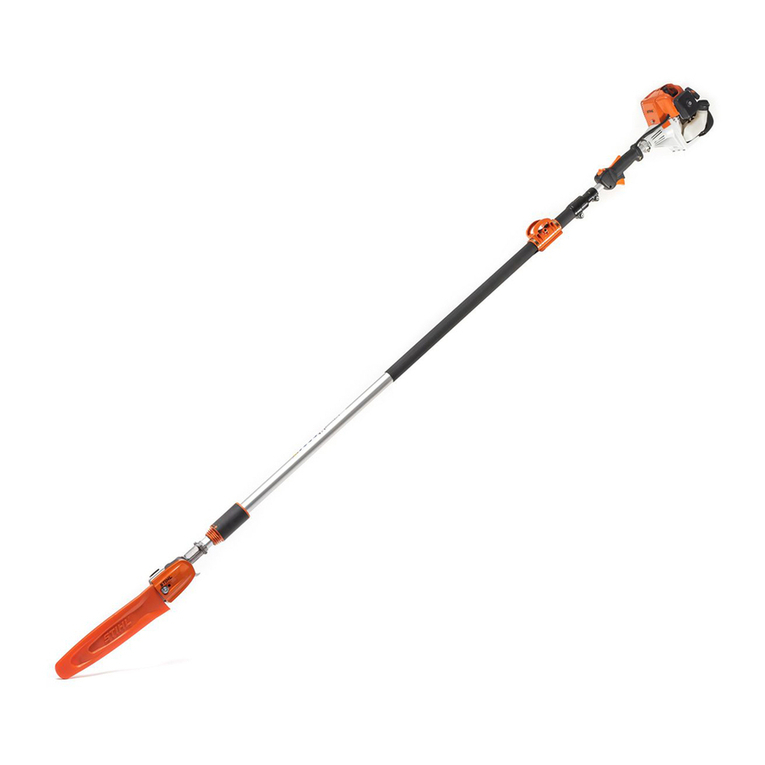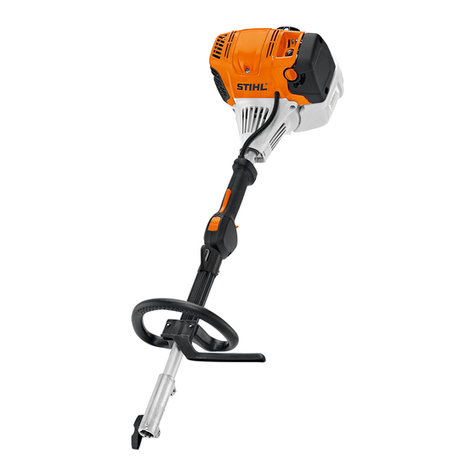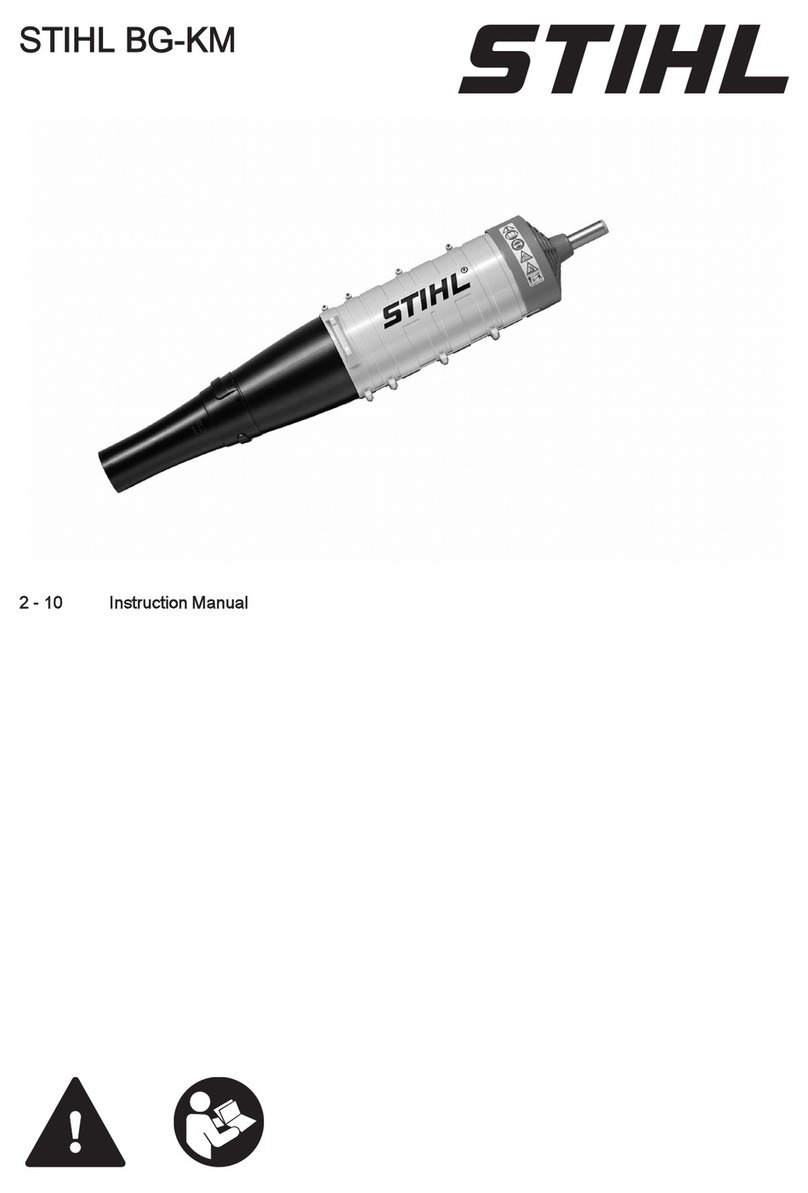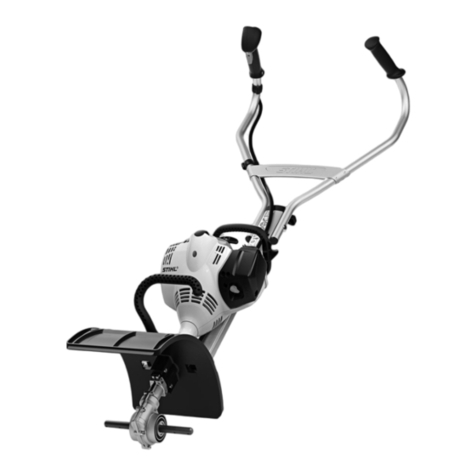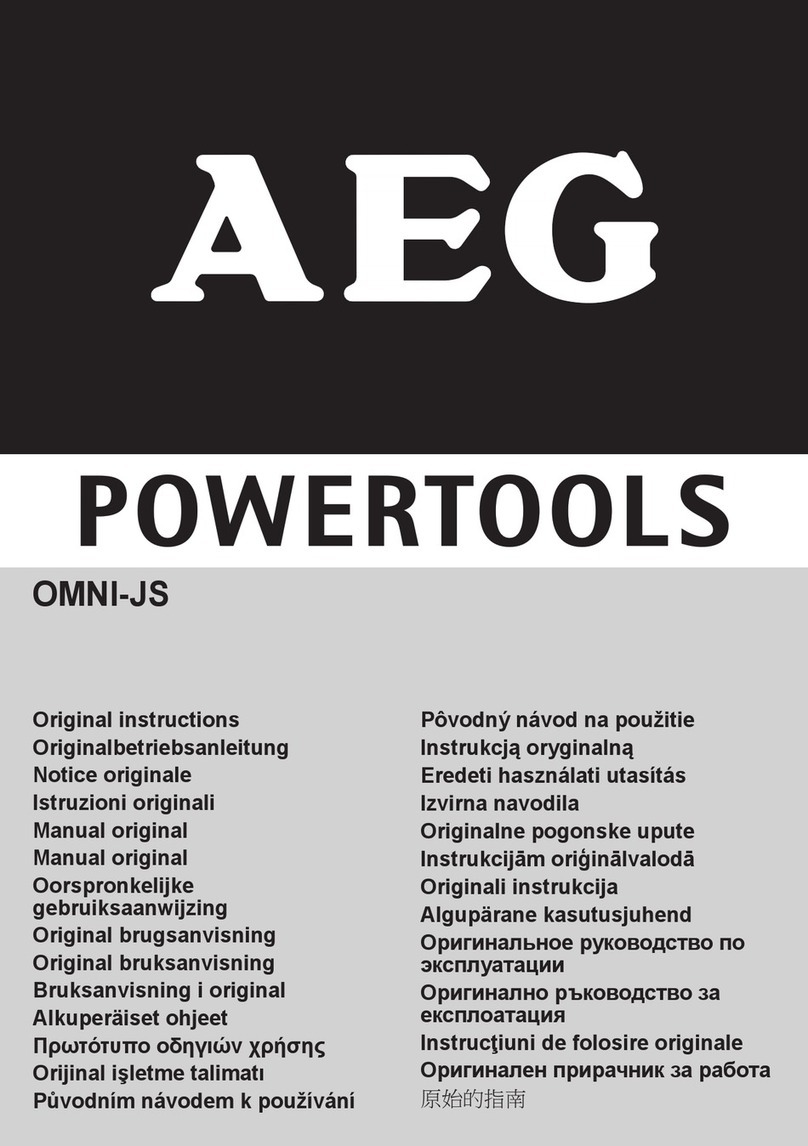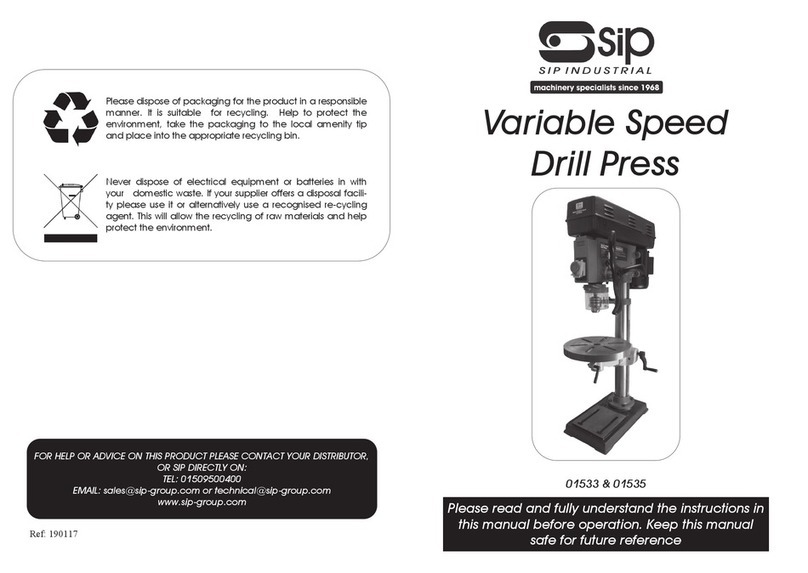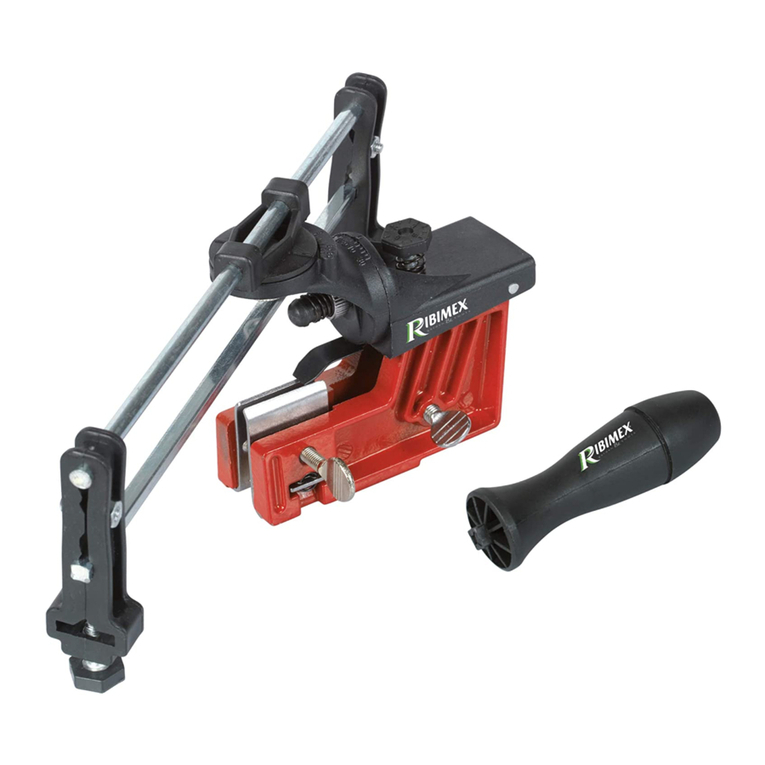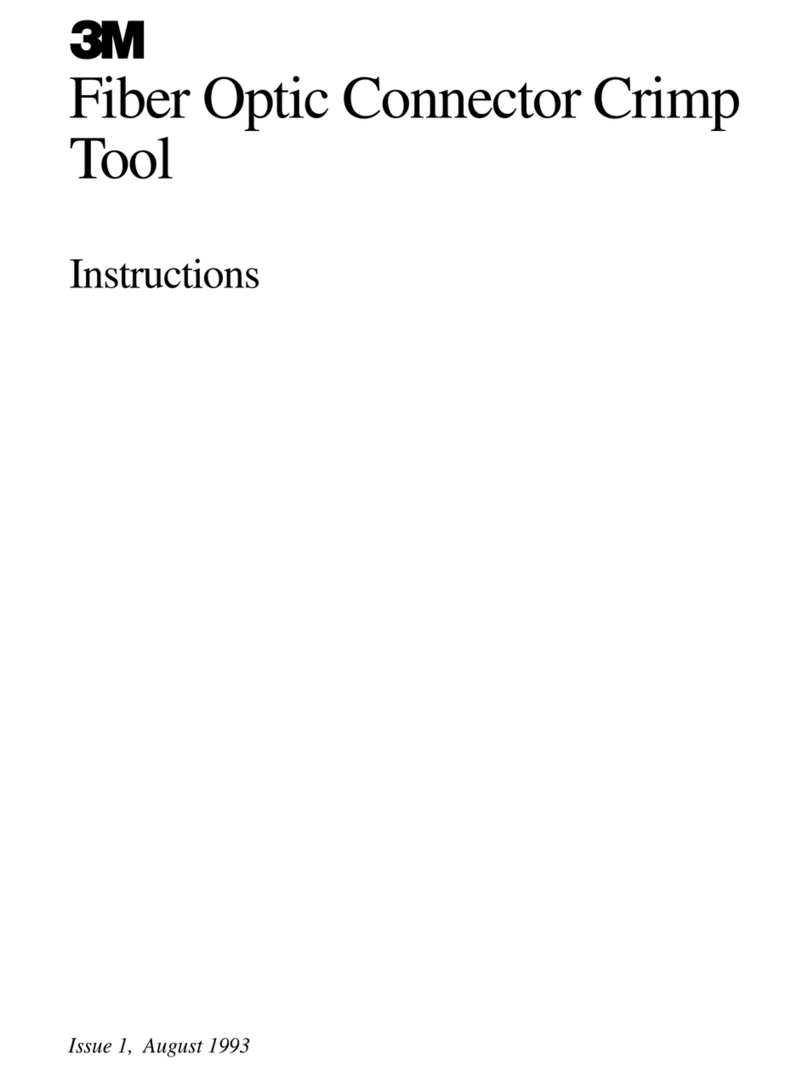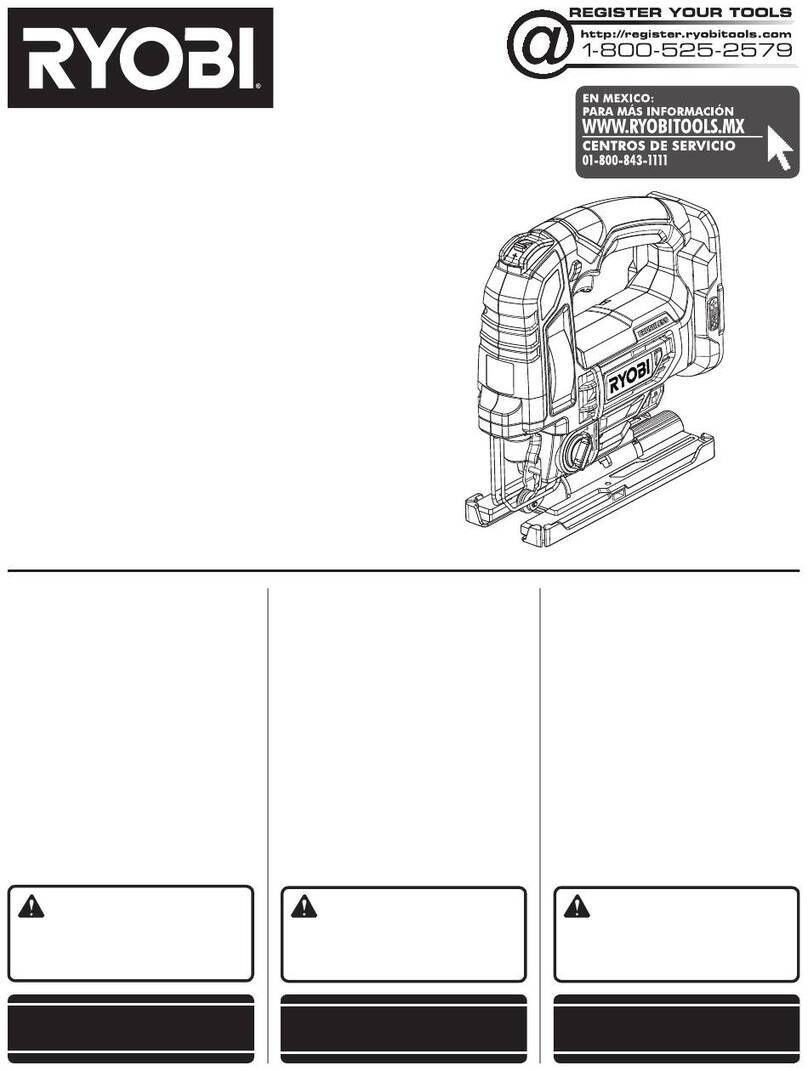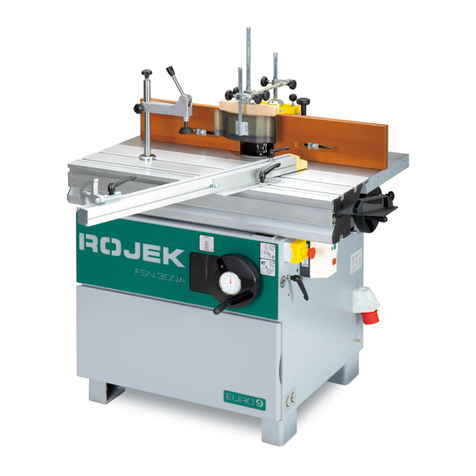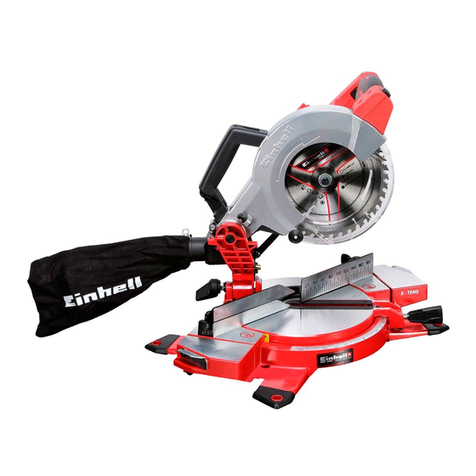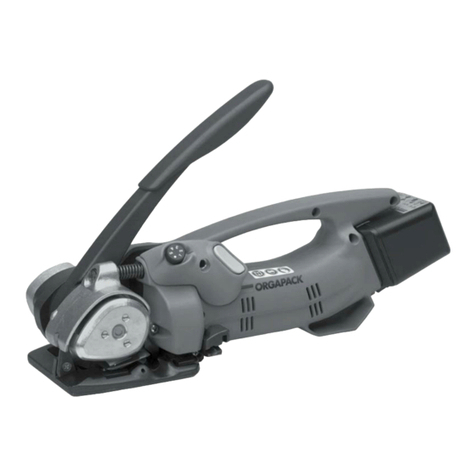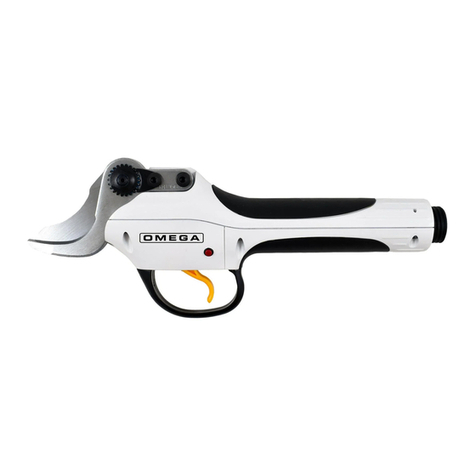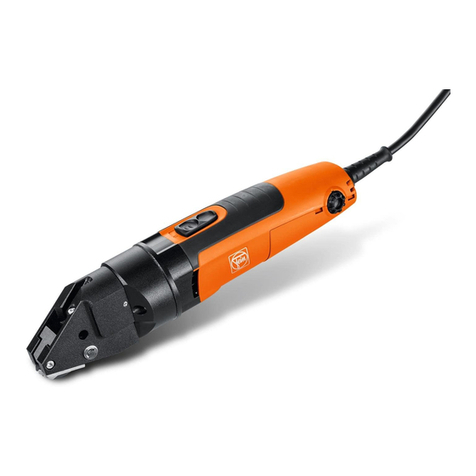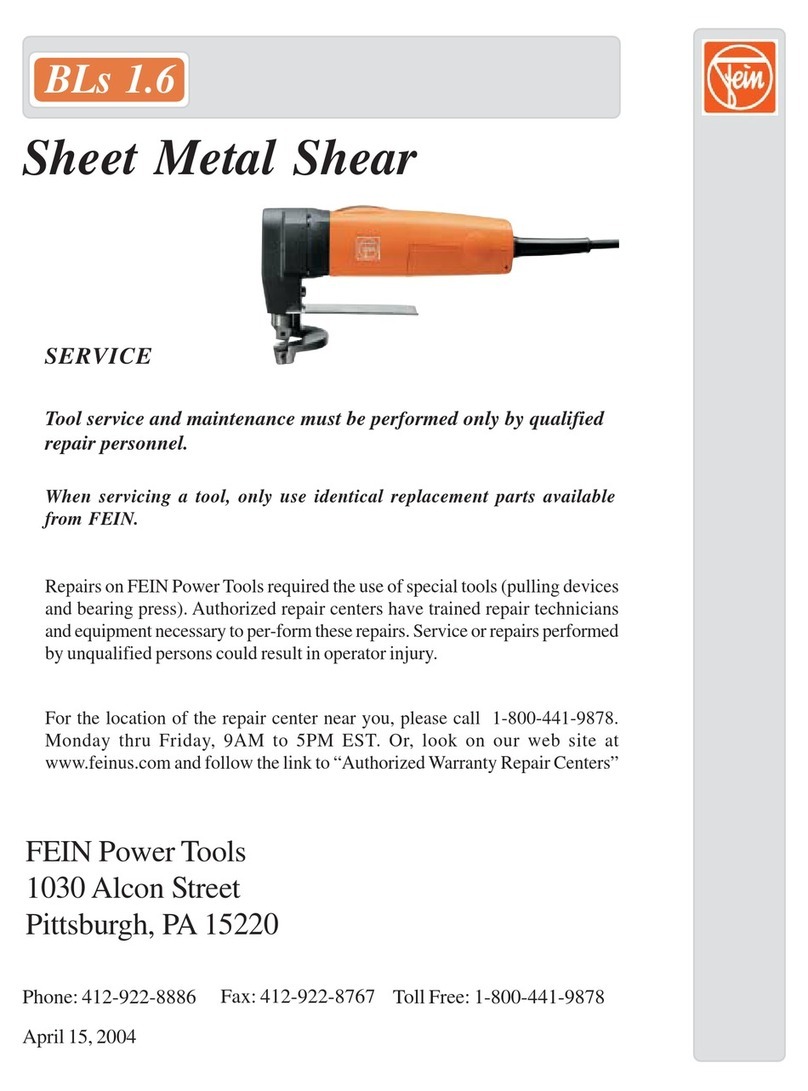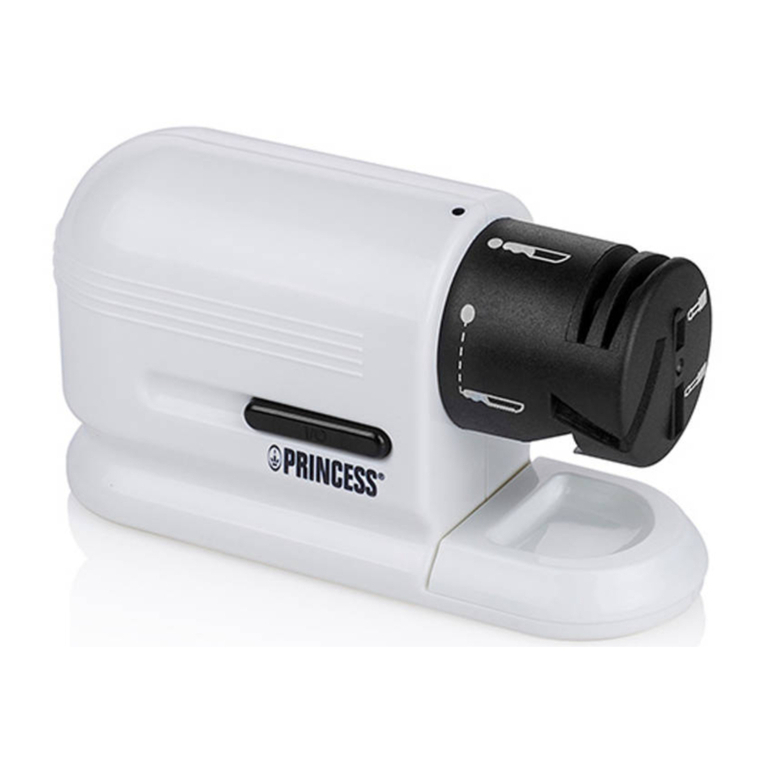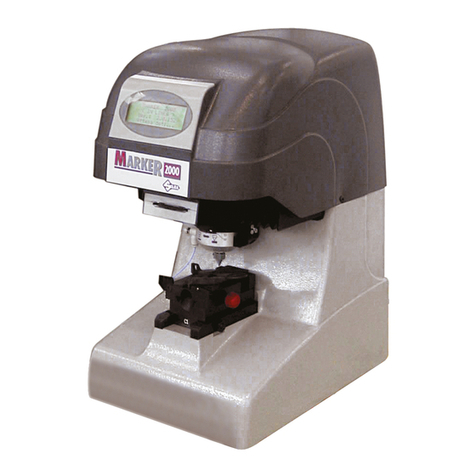
FC-MM
English
5
Be extremely cautious when pulling the
power tool towards you because of the
risk of injury from contact with the
rotating attachment.
Make sure you always have good
balance and secure footing.
Be extremely cautious when changing
direction with the power tool – especially
on slopes.
On slopes, always work parallel to the
gradient to reduce the risk of injury from
slipping or contact with the attachment.
Never work on steep slopes because of
the risk of injury through loss of control
of the power tool.
Take particular care when working close
to fences, walls, stones, roots, trees and
areas of dense growth. Solid objects
may be ejected in your direction or
damage the attachment – risk of
accidents.
When working next to high scrub,
bushes and hedges, avoid harming
animals!
Be particularly alert and cautious when
wearing hearing protection because
your ability to hear warnings (shouts,
alarms, etc.) is restricted.
Take breaks when you start getting tired
or feeling fatigue – risk of accidents!
Work calmly and carefully – in daylight
conditions and only when visibility is
good. Proceed with caution, do not put
others in danger.
If your power tool is subjected to
unusually high loads for which it was not
designed (e.g. heavy impact or a fall),
always check that it is in good condition
before continuing work – see also
"Before Starting". Make sure the safety
devices are working properly. Never use
a power tool that is no longer safe to
operate. In case of doubt, contact a
dealer.
Do not touch the attachment while the
engine is running. If the attachment
becomes jammed by an obstruction,
switch off the engine immediately before
attempting to remove the obstruction –
otherwise, risk of injury!
Opening the throttle while the
attachment is blocked increases the
load and reduces engine speed. The
clutch then slips continuously and this
causes overheating and damage to
important components (e.g. clutch,
polymer housing components) – and this
can increase the risk of injury from the
attachment moving while the engine is
idling.
Check the sweeping attachments at
regular short intervals during operation
or immediately if there is a sudden
change in behavior:
–Shut off the engine, hold the
machine securely.
–Check condition and secure fitting;
watch out for cracks
–Replace a damaged cutting
attachment immediately, even if it
has only superficial cracks.
Clean the attachment and deflector at
regular intervals during operation.
–Shut off the engine
–Use gloves
–Remove grass, weeds, clumps of
soil, etc.
To reduce the risk of injury, shut off the
engine before changing the attachment.
Do not continue using or attempt to
repair damaged or cracked cutting
attachments by welding, straightening or
modifying the shape (out of balance).
If a rotating metal cutting attachment
touches a rock or another hard object,
sparks may be generated which may
possibly ignite combustible materials.
Also dried-out plants and brushwood are
combustible, above all in hot and dry
weather. If there is a risk of fire, do not
use metal cutting attachments in the
vicinity of combustible materials, dried-
out plants or brushwood. It is mandatory
that you ask the responsible forestry
office about the current fire hazard.
After finishing work
After finishing work or before leaving the
power tool unattended: Shut off the
engine.
After finishing work, clean dirt, soil and
plant residue off the attachment – wear
gloves to reduce the risk of injury.
Do not use any grease solvents when
cleaning.
After thoroughly cleaning, coat metal
surface of attachments with a corrosion
inhibitor.
Maintenance and Repairs
Service the machine regularly. Do not
attempt any maintenance or repair work
not described in the MultiTool and
